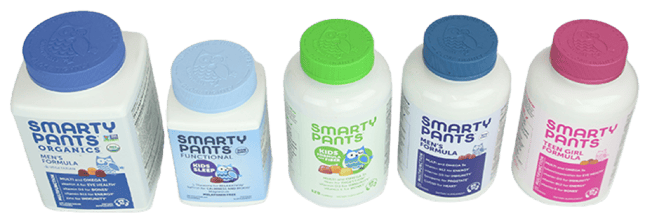
Next time you find yourself opening a child-resistant medicine bottle or quart of motor oil and mutter to yourself, “Who invented these things anyway?,” you can thank one Dr. Henri J. Breault, a Canadian pediatrician and father who simply refused to accept a status quo of 100,000 tragic cases of accidental poisoning a year. His invention, the “Palm N’ Turn,” was patented in 1967 and led to the worldwide introduction of Child Resistant Caps (CRC) and a 91% reduction in local child poisonings. (source: https://thedrivemagazine.com/posts/henri-breault/)
The Consumer Product Safety Commission (CPSC) as well as the U.S. Environmental Protection Agency (EPA) require Child-Resistant packaging with various products. The CPSC administers the Poison Prevention Packaging Act of 1970 (PPPA), which states in part: “The term ‘‘special packaging’’ means packaging that is designed or constructed to be significantly difficult for children under five years of age to open or obtain a toxic or harmful amount of the substance contained therein within a reasonable time and not difficult for normal adults to use properly, but does not mean packaging which all such children cannot open or obtain a toxic or harmful amount within a reasonable time.”
The EPA sets standards for packaging of pesticides and/or devices to protect children and adults from serious illness or injury resulting from accidental ingestion or contact under the Federal Insecticide, Fungicide, and Rodenticide Act (FIFRA), section 25 (c)(3).
What types of Child-Resistant Caps and Closures are there?
Today’s cap designs include:
- Push-and-turn
- Squeeze-and-turn
- Squeeze-and-pull
- Rim-snap
And make no mistake, it is the cap that makes a package genuinely child-resistant, and therefore fully compliant with PPPA/FIRFA regs.
Child-resistant packaging has certainly saved tens of thousands of young lives nationwide since 1970, when the CPSC first introduced its PPPA regulations. And while no package can truly be called “child-proof,” today’s child-resistant technologies have transcended Dr. Breault’s original design to bring not only safety, but sustainability, clarity and convenience to CR plastic caps and containers.
Post Consumer Recycled (PCR)
New advances in recycled materials have made Post Consumer Recycled (PCR) resin a reality for child resistant closures. Mold-Rite closures, for example, are created from recyclable Polypropylene, with successful protocol testing up to 100% PCR in both inner and outer components of 45, 53 and 63mm CRC’s. A good thing indeed, given how rapidly demand for more sustainably sourced packaging among the largest consumer packaging customers has grown; in particular beyond pharmaceuticals as new active ingredients and market segments exploded across the consumer landscape. From healthcare to those gummy vitamins kids love, growing markets include:
- Automotive
- Chemicals
- Nutraceutical
- Personal Care
Of course, cap manufacturers are facing the same supply chain challenges as the rest of the world, in particular as regards PCR resin and some cap liner materials. In early 2021, for example, between refinery shutdowns and freight congestion, an astonishing 88% of domestic PCR resin capacity was lost for many weeks, and recovery continues even now. That said, MRP has invested approximately $35MM in facility expansions, new tools, presses and lining equipment, and continues to manage raw materials, specifically lining material and resin, to ensure supply security for our valued customers and have avoided any disruption.  Consider SmartyPants; one of the fastest growing vitamin manufacturers in the world (and now part of the Unilever family of brands). In 2019, SmartyPants chose Mold-Rite to launch a new project after they discovered their ability to incorporate PCR: a customized logoed child-resistant closure with a brand-based owl design. Offering a sustainable solution with up to 100% PCR in the outer, the closures have passed protocol testing. In fact, testing was so successful, there are plans to incorporate PCR into the inner.
Consider SmartyPants; one of the fastest growing vitamin manufacturers in the world (and now part of the Unilever family of brands). In 2019, SmartyPants chose Mold-Rite to launch a new project after they discovered their ability to incorporate PCR: a customized logoed child-resistant closure with a brand-based owl design. Offering a sustainable solution with up to 100% PCR in the outer, the closures have passed protocol testing. In fact, testing was so successful, there are plans to incorporate PCR into the inner.
One of the challenges often associated with PCR is difficulty in achieving accurate color matches. For SmartyPants, however, Mold-Rite successfully matched over 20 jewel-tone colors with PCR to the customer’s satisfaction.
Thanks in part to such new eco-friendly packaging, SmartyPants is expanding, including product placement in Costco due to the redesign and sustainability story. Sara Mallie, Senior Director of Innovation and Project Management for SmartyPants noted, “SmartyPants will be launching a new campaign on two of their highest volume SKUs into Costco. To see pallets of our prenatal Women’s line and Organic Women’s line staged in Costco’s warehouse is so exciting.”
Among domestic manufacturers, Mold-Rite offers the most complete collection of child resistant closures on the market, as well as a broad array of jars, continuous thread closures, dispensing closures and specialty caps.
Their extensive line of child resistant closures includes:
- Sizes from 20mm to 89mm
- Pictorial, text and EZ-Safe® styles
- Embossed and debossed options
- Smooth top for custom messaging
Standard and custom colors... ideal for standing out on crowded store shelves
Combined with the recent additions of both the 22mm and vented 38mm child resistant closures along with the new Sleek CR launching soon, Mold-Rite has more child resistant options than ever, manufactured with industry leading standards including:
- A robust manufacturing environment
- Flexible delivery and service model
- ISO 9001 Certification ensures we follow our process with every item produced
- Audited quality system
- Product traceability
- Certificate of Compliance with every order shipped
- Scrupulous vendor audit program
- cGMP manufacturing
- Type III DMF holder
- Tool and product validation integrated with Engineering and Quality support
And, single source capabilities, domestic manufacturing, in-house design and tooling capabilities all allow the rapid development of custom solutions.
Those solutions can be augmented through the use of tamper-evident seals and plastic pull-rings, which require strength and dexterity most five-year-olds don’t possess: another layer of protection in case a child does manage to remove the cap of a fresh bottle or jar of product. Specific label warnings increase safety margins as well, as grown-ups are reminded of recommended safe storage. All such options, along with CR caps, help reduce manufacturers’ liability while supporting corporate responsibility.
And one final thought: it should be noted that Dr. Breault may have been beaten to the punch by roughly 2500 years... by the ancient Mayans. Archeologists from the University of Texas, examining the ruins of Río Azul in 1986 in what is now Guatemala, discovered among the pots and bottles on which proved quite a challenge to open. “The lid to this unusual vessel... twists off much like a child-proof cap on a modern medicine vial,” one digger observed. (source: https://www.mentalfloss.com/article/54410/surprising-origins-child-proof-lids)
After further research, turns out history’s first known child-proof lid had been created to protect a most important substance in Mayan culture... a batch of chocolate.



